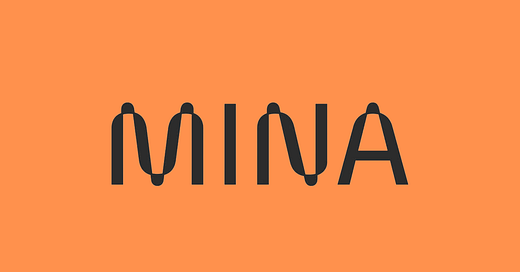Know Your Coin: MINA Protocol
MINA Protocol: The Lightweight Blockchain Solution that's Breaking the Chains of Centralization
Created by O(1) Labs and launched in 2021, Mina Protocol is a blockchain network that prioritises security, accessibility, and decentralisation to achieve what it calls a “light” blockchain infrastructure. Mina achieves this via a technical innovation known as zk-SNARKs and a Proof-of-Stake (PoS) consensus mechanism. The Mina crypto project is predicated on the idea that blockchains like Bitcoin are bound towards centralisation due to a contradiction inherent in their structure.
On blockchain networks built with a Proof-of-Work (PoW) consensus mechanism, each network node must confirm the entire data history of the chain before new transactions can be processed. The more transactions on a blockchain, the longer it takes to verify. As networks grow, their data burden becomes more extensive, and more processing power is required to furnish transactions efficiently. More processing power generally requires more specialised hardware, which can, in turn, serve as a barrier to entry for many people who want to run nodes.
As a result, those with the resources to handle the file sizes are only a powerful few, thus moving the project from decentralised to centralised. Mina Protocol solves this problem with more efficient use of data and a new technological innovation known as zk-SNARKs.
Zk-SNARKs Explained
A zk-SNARK is a zero-knowledge proof protocol where one can prove they possess certain information without revealing it or interacting with the parties confirming and verifying the data.
The term "zk-SNARK" is an acronym; where each part of the name refers to a characteristic of zk-SNARKs, so it helps to look at each component separately:
Zero-Knowledge: The prover can show the verifier that they have a piece of information without providing it.
Succinct: The proof can be verified within a few milliseconds since the proof length is only a few hundred bytes at most.
Non-Interactive: The proof consists of a single message from the prover to the verifier.
Argument: Argument is the term used for these proofs because they don't quite fit the traditional definition of proofs but effectively serve the same purpose.
Knowledge: Knowledge refers to the information possessed by the prover.
In cryptocurrency, zk-SNARKs are a way for transactions to be private and fully encrypted on the blockchain while still being validated using the network's consensus rules. zk-SNARKs can show that the sender has the funds they want to transfer without publicising that information.
DApps Re-imagined
Computation on Ethereum happens on-chain, which has led to a range of problems:
Network congestion
Prohibitively high transaction fees
Transparently exposed user data
Ever-growing cost of computing the whole chain from scratch when a developer wants to deploy a dapp.
Mina solves all these problems, all at once, with an entirely new category of a decentralised application called Snapps.
While these apps may use data from various chains, they are only shared via zero-knowledge metadata, so users’ data is not readable. Using an example of verifying credit scores: a snapshot of the credit file could be created and used as proof that one qualifies for a loan. There is no explicit sharing of credit data, but proof that allows the transaction to proceed securely. This design for securely bringing real-world data to the blockchain gives Mina a potential advantage in decentralised finance (DeFi). From a security point of view, one can remain in control of their data.
Snapps are SNARK-powered applications, differentiated from dapps by two characteristics:
Scalability: Snapps verify that computation is correctly executed, allowing bandwidth and processor-intensive computing to move off-chain.
Privacy: Snapps verify data integrity without disclosing the data itself.
Tokenomics
Mina wants to incentivise staking, so to begin with, the inflation rate of the coin is 12%, and then over five years, it will fall to 7%. The native MINA cryptocurrency is used to process Mina crypto network transactions. Staking MINA is also available on various platforms. MINA coins are also the payment method to incentivise block producers and Snarkers, who keep the network running efficiently.
Perspective
What if the blockchain could fit in the palm of your hand? Doesn’t that sound like the ‘iPhone Moment’ for crypto?
Mina is attempting something audacious here. Imagine making permissionless payments through traditional web apps straight from your browser or smartphone or instantly proving a photo is authentic and not a deep fake.
And all of the above while maintaining complete privacy. This could help people build accurate trustless systems where we have voting systems where no one can see who one voted for, but anyone can verify the results.
Snapps enable all of these scenarios and many more. Mina’s roadmap includes support for a bridge to Ethereum and simple conversion of dapps into snapps.
Mina Protocol attempts to solve the problem of scalability using Proof of Validity. Rather than having large data files shared, proofs or SNARKs are shared that allow data to be secure and the blockchain to be more efficient.
Since the chain is smaller, a much broader demographic can verify the blockchain, and thus more trust, security, and decentralisation are encouraged.







